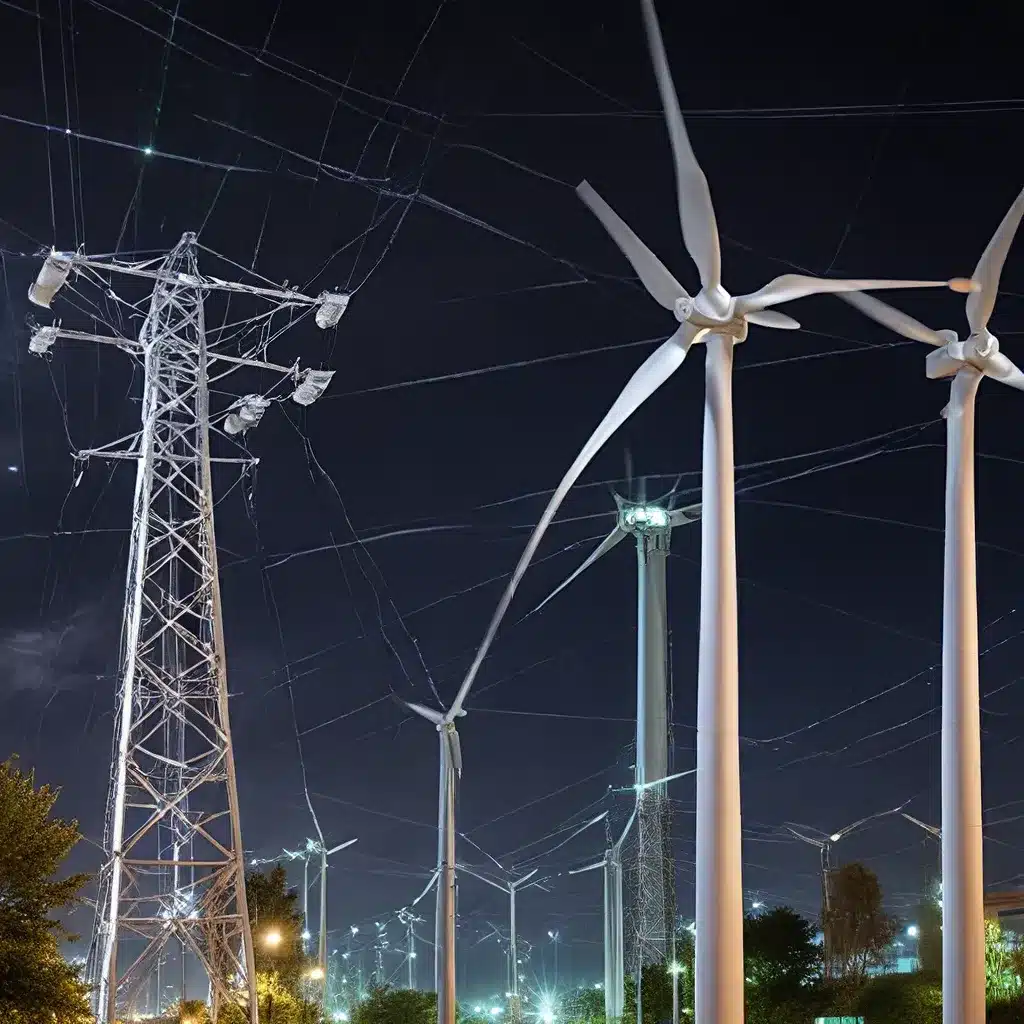
The Rise of Sensor Networks and IoT
The world is rapidly embracing the Internet of Things (IoT), a vast network of interconnected devices and sensors that gather and exchange data, transforming the way we interact with our environment. At the heart of this revolution are sensor networks, intricate systems designed to collect, process, and transmit valuable information from the physical world to digital platforms.
As the number of IoT devices continues to grow exponentially, reaching hundreds of millions of active endpoints, the challenge of effectively managing and powering these networks becomes increasingly critical. Energy management has emerged as a key focus area, as sensor networks must operate efficiently and sustainably to fulfill their potential in transforming industries, cities, and our daily lives.
The Unique Challenges of Sensor Network Energy Management
Sensor networks face distinct energy management challenges that set them apart from traditional power grid systems. The intermittent and unpredictable nature of renewable energy sources, such as wind and solar, can create fluctuations and instability in the power network. This, in turn, poses a significant hurdle for sensor networks, which require reliable and stable power to function effectively.
Additionally, the distributed and decentralized nature of sensor networks presents unique challenges. With hundreds of millions of active endpoints spread across various systems, from generators and substations to distributed energy resources and electric vehicles, coordinating and controlling these networks becomes increasingly complex.
Advancing Energy Management Strategies
To address these challenges, researchers and industry leaders are exploring innovative distributed learning, optimization, and control methods that can help manage the complexities of future power grids and sensor networks.
Distributed Learning and Optimization
One promising approach is the use of multi-agent reinforcement learning techniques, which enable sensor networks to learn and adapt to changing environmental conditions autonomously. By leveraging distributed algorithms, sensor nodes can collectively optimize power usage, energy storage, and load balancing, ensuring stable and economic operation of the network.
Furthermore, block coordinate descent technology has been employed to minimize energy consumption in wireless sensor networks while maximizing secure data transmission rates. This approach helps strike a balance between energy efficiency and network security, a critical consideration in the IoT landscape.
Distributed Control Strategies
In addition to optimization methods, distributed control schemes have emerged as a key strategy for managing sensor networks. These control systems leverage advanced sensors, actuators, and communication equipment deployed across various components of the power network, enabling coordinated and autonomous operation.
For example, researchers have proposed a multi-time-scale control method that combines deep Q-network (DQN) and deep deterministic policy gradient (DDPG) algorithms to maintain optimal voltage regulation in distribution networks. This approach optimizes voltage control over longer and shorter timescales, taking into account the state of charge of energy storage systems.
Microgrids and Virtual Power Plants
Another innovative approach to energy management in sensor networks is the integration of microgrids and virtual power plants (VPPs). Microgrids are localized, self-sustaining power grids that can operate independently or in conjunction with the main grid, providing a resilient and flexible power source for sensor networks.
VPPs, on the other hand, aggregate the collective generation and demand of distributed energy resources, including sensor networks, to optimize energy trading and promote the consumption of renewable energy. By considering both the economic and environmental factors, VPP trading strategies can enhance the efficiency and profitability of sensor network energy management.
Ensuring Reliability and Security
As sensor networks become more prevalent, the need for robust security and reliability measures becomes paramount. Researchers have explored various techniques to address these concerns, including fault-tolerant control schemes that leverage wavelet analysis and consensus algorithms to mitigate the impact of faults and attacks on voltage and frequency regulation in smart grids.
Additionally, magnetic induction positioning and communication systems have been developed for underwater sensor networks, providing energy-efficient distributed control and stable long-term function for these critical applications.
The Future of Sensor Network Energy Management
The ongoing advancements in distributed learning, optimization, and control methods for sensor networks and power grids hold immense promise for the future. By embracing these innovative strategies, sensor network designers and operators can unlock new levels of energy efficiency, reliability, and sustainability, paving the way for a more resilient and responsive IoT ecosystem.
As the sensor network landscape continues to evolve, the integration of these cutting-edge energy management techniques will be crucial in powering the future and realizing the full potential of the Internet of Things. By effectively managing the energy demands of sensor networks, we can unlock new avenues for technological innovation, environmental sustainability, and improved quality of life for communities worldwide.
Explore the sensor networks and IoT ecosystem to discover more about the transformative potential of these emerging technologies.